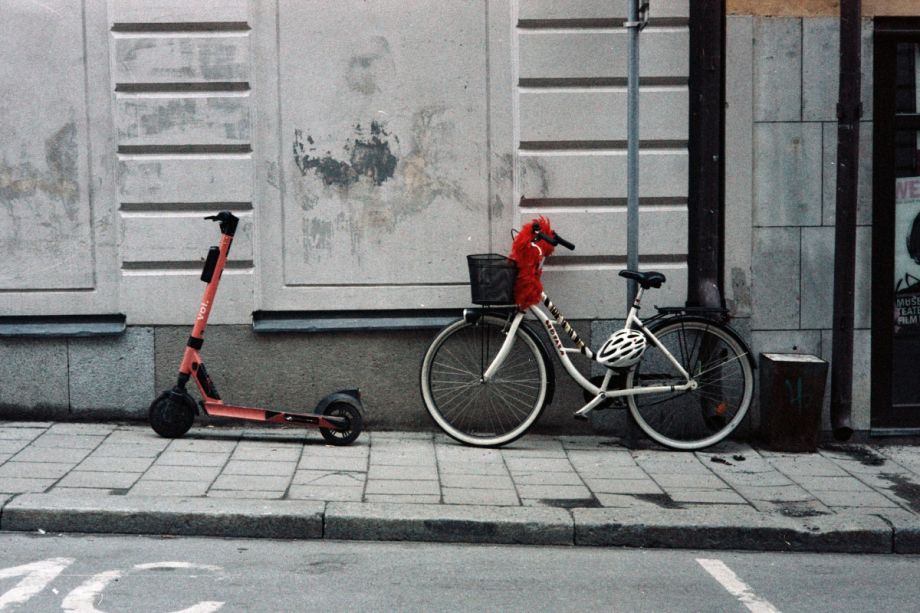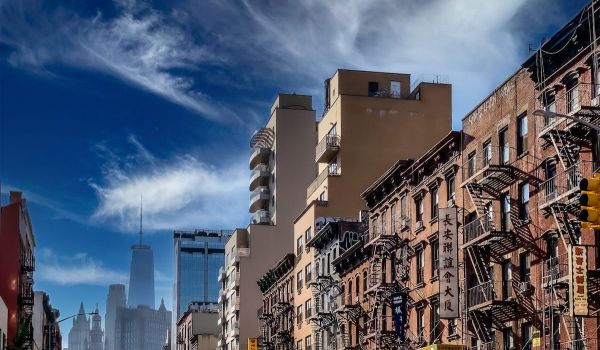Taking a shared bike or scooter to work or school could increase access to economic opportunity — but what if you don’t have a smartphone, credit card or enough money to ride? Or what if there are no vehicles in your neighborhood?
In July, researchers at the University of Oregon released “Mobility for the People: Evaluating Equity Requirements in Shared Micromobility Programs,” a report spanning 239 bikeshare and scooter-share programs nationwide. The report found that although a surprising number of cities had equity requirements, many failed to set specific goals or measure impact.
As cities attempt to get residents to drive less, alternative forms of transportation like e-bikes and e-scooters have been touted as a possible climate solution. However, these modes of transportation are not always accessible to everyone, whether because of cost, access or even a sense that this particular mode is not “for them.”
What can cities do to promote access beyond requiring equity components as part of their shared micromobility programs? Here are five strategies from experts in the field.
Don’t just make equity requirements — measure their impact
“Great, we have these requirements,” says Anne Brown, assistant professor at the University of Oregon and co-author of the report. “So what? — which ones are working?”
Simply put, requiring reduced fares is one thing. Judging whether these requirements have created more ridership for low-income people is another.
“Originally, we really wanted to also know how effective these regulations were in practice,” she says. “And through doing this research, we found that really there’s just not enough data.”
Cities took a “scattershot” approach, adds Amanda Howell, co-author and researcher at Urbanism Next. Even though a municipality might have goals, requirements and data, these three wouldn’t necessarily be connected and studied in a meaningful way. The report suggests completing the “full arc,” or setting clear equity goals, setting requirements based on those goals and then collecting data to measure whether goals were met.
When cities collect data linked to program goals, they can fine-tune their equity requirements and figure out what actually works.
Location, location, location
In the case of dockless e-bikes and e-scooters, companies like Bird, Lime or Spin are often incentivized to deploy in more lucrative, dense areas of the city — often downtown — leaving less affluent neighborhoods behind.
Brown and Howell say that 30% of cities have a geographical equity requirement — but note that merely requiring companies to place vehicles in certain neighborhoods is not enough. In Baltimore, the micromobility program took a strategic approach, requiring that companies deploy three vehicles every morning in 12 specific equity zones, often “not much bigger than a block,” according to Meg Young, new mobility manager at the Baltimore City Department of Transportation.
The city initially started with 50 equity zones based on where planners thought riders would ride — near libraries, recreation centers or other hubs — and where operators did not place scooters during the pilot. It then narrowed the zones down to 20, then 12 based on ridership patterns. The program found that riders were often using scooters to connect to transit.
“Because there has to be three vehicles from each company each morning,” explains Young, “You could actually integrate it into your commute.”
This strategy increased ridership in parts of the city where private operators were not initially deploying vehicles, finding new riders who benefitted from access to e-scooters and bikes.
Do active outreach and partner with trusted community members
Studies have shown that Black and brown people face systemic barriers to biking that might discourage adopting shared micromobility — especially when cities and operators fail to build trust with the community. While some municipalities require or incentivize getting a certain number of signups for equity programs, doing active outreach is key.
“I think it’s important to really get the word out — you can’t just drop bikes into a community and expect that it’s gonna get taken up,” says Colin Murphy, director of research and consulting at the Shared-Use Mobility Center.
“So you know, working with trusted voices in the community, whether that’s bike clubs, or churches… getting the word out and building trust in a new system, that it is actually something for everybody,” he says.
In the early days of the e-scooter boom, companies would dump scooters on the streets of disadvantaged neighborhoods and call it a day. Unsurprisingly, these scooters were often destroyed.
But if your neighbor uses a shared scooter to get to work, it changes your perspective.
Baltimore took an active approach, doing active outreach in vandalism hotspots about the benefits of e-scooters and the availability of discounted rides. Hiring from the community and talking to everyone — especially the “little old ladies of the neighborhood” made a difference.
“If you want an adolescent to stop doing whatever they’re doing, find their auntie — at the end of the day, that’s the most effective thing you can do,” says Young.
Leverage your role as the city to connect companies with community organizations
Some cities require private scooter or bike share companies to partner with a community-based organization, putting the burden on the company to establish that relationship.
“If you have five different providers trying to communicate with the same community-based organization, all of a sudden, when they’re trying to apply for a permit — I don’t think that that’s a great model,” says Howell.
Instead, experts suggest that cities take on a greater role of connecting private companies to local organizations and nonprofits.
In Baltimore, one of the surprising partnerships that developed was with Safe Streets, the city’s anti-violence program.
“They view [micromobility] in a holistic way,” says Young. “If somebody can’t get to an opportunity and they can’t get anywhere… you’re narrowing their opportunities. You’re not helping them get out of what could be an environment of violence.”
Not only is it easier for cities to maintain relationships with local organizations, if a private operator leaves the city, it doesn’t leave the community in the lurch.
Put your money where your [equity] priorities are
Murphy notes that requiring micromobility companies to run equity programs isn’t going to solve decades of disinvestment in underserved communities.
When Bird, Lime and other startups first launched in 2017 and 2018, companies were flush with venture capital money and willing to make big promises to get their vehicles in the public right-of-way.
“A lot of the operators suggested… that their profits would go back to the cities to help build bike and scooter lanes,” explains Murphy. “And then the trade off there was that
‘You just need to give us free rein to operate how we know best.’”
But the power balance seems to be shifting as operators struggle to achieve profitability — Bird and Spin recently announced that they are pulling out of some markets due to over- and under-regulation — and Bird back-tracked on those promised bike lanes back in 2019.
Safe infrastructure for bikes, scooters and all road-users is — and has always been — a city problem.
“We definitely heard… ‘Great. What good is a scooter if I don’t want to ride on these 40-mile-an-hour streets and there’s no sidewalks?’” says Brown.
Industry experts say that the future of the shared micromobility industry is cities taking on more of the burden of running a transportation network.
“If we’re saying it’s part of our transportation system, at a certain point we have to expect that we’ll start subsidizing some of these [equity requirements] to make it truly public and equitable,” says Young.
“We subsidize everything else.”

Maylin Tu is Next City's Equitable Cities Reporting Fellow for Social Impact Design. A freelance reporter based in Los Angeles, she writes about transportation and public infrastructure (especially bus shelters and bathrooms), with bylines in the Guardian, KCET, Next City, LAist, LA Public Press and JoySauce. She graduated with a BA in English from William Jewell College in Missouri.
Follow Maylin .(JavaScript must be enabled to view this email address)
















